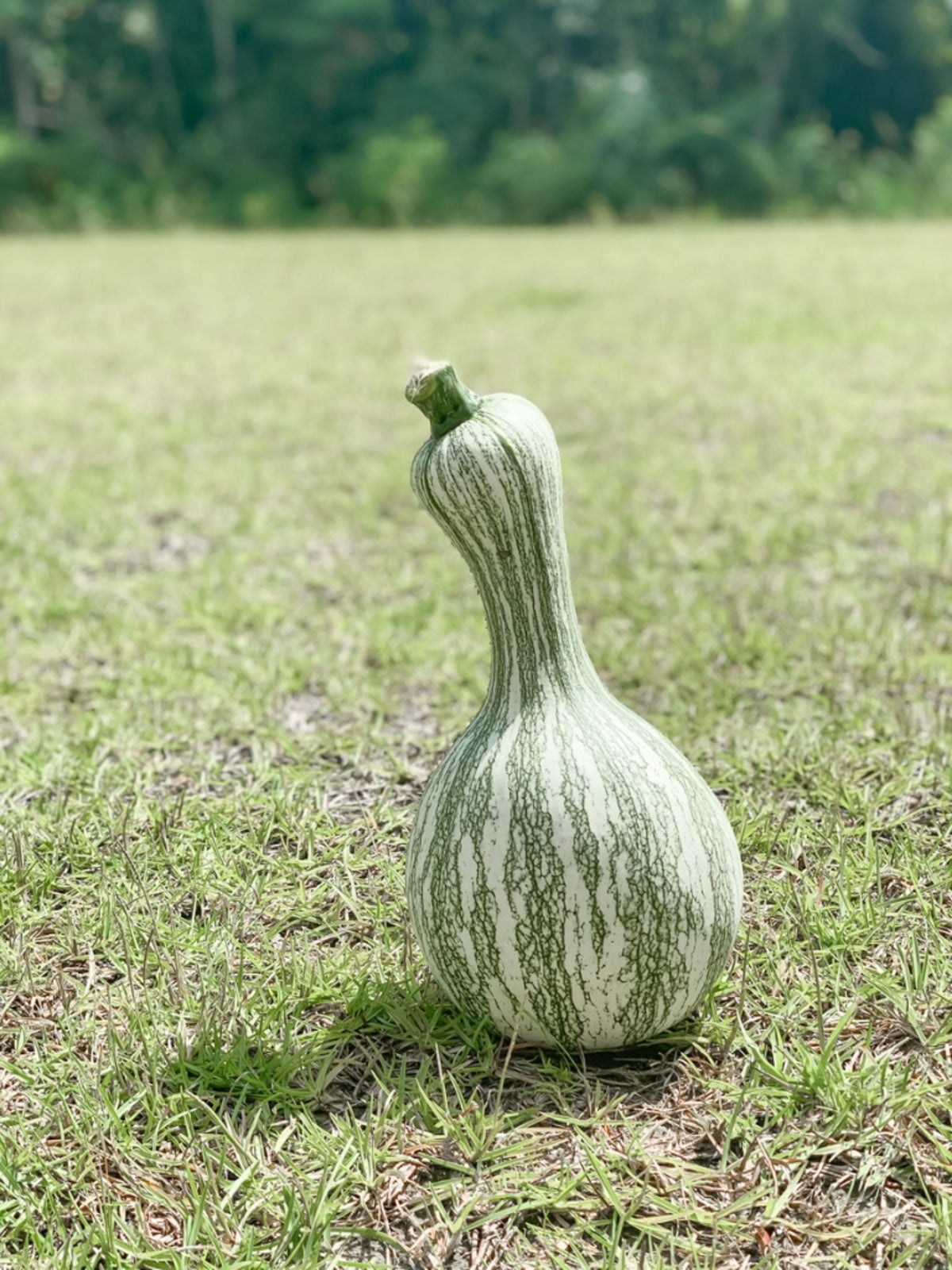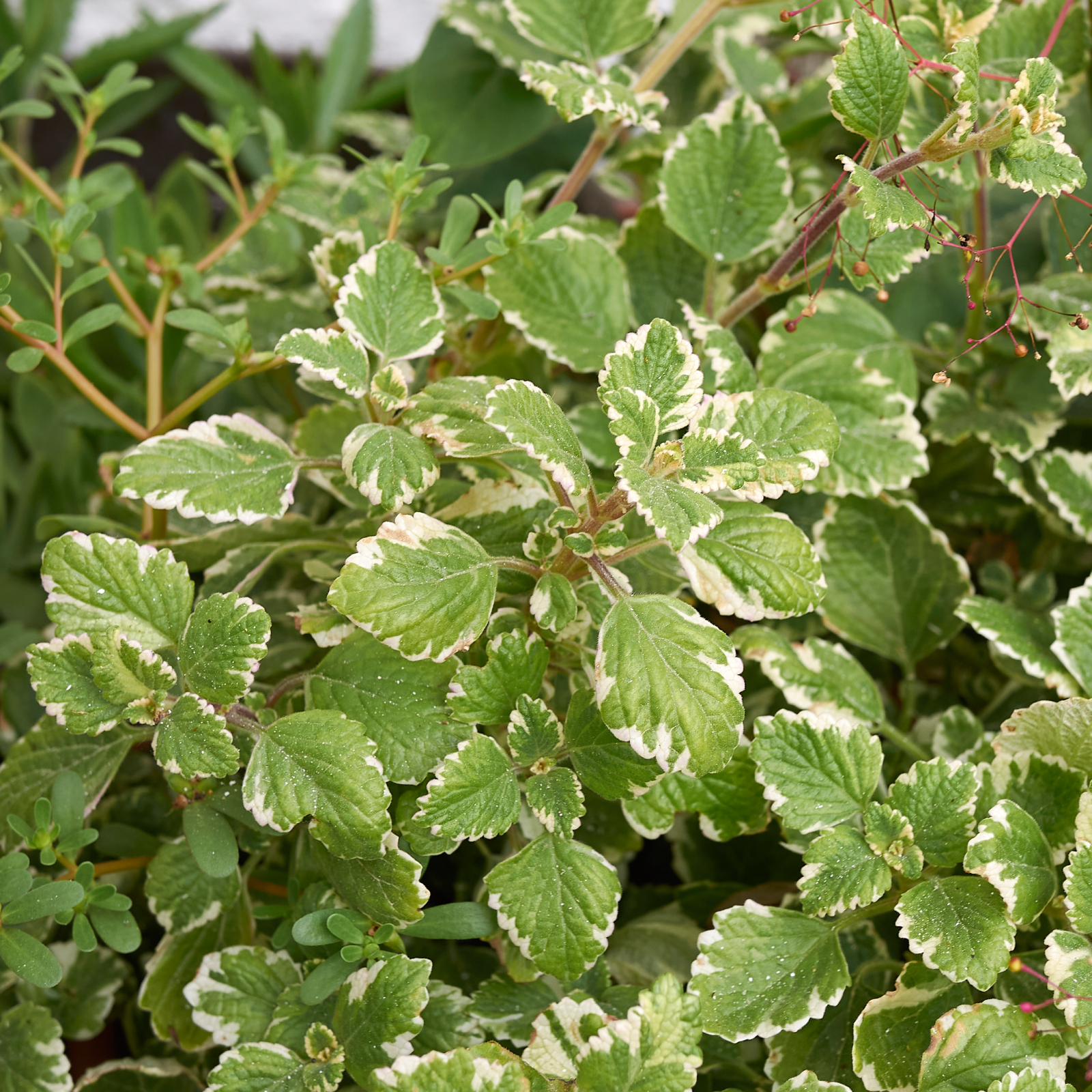Cushaw Squash Plants – How And When To Plant Cushaw Squash

If you reside in the American South, you may already be familiar with growing cushaw squash. An heirloom crookneck squash from the family Cucurbitaceae, cushaw squash plants have a number of benefits over other winter squash varieties. So how to grow cushaw squash plants and what other interesting information can we dig up?
Cushaw Squash Plant Info
Cushaw (Cucurbita argyrosperma) hails from the Caribbean and, thus, tolerates humid conditions. This squash is a green striped, crook-necked variety cultivated by Native Americans as a staple food. Fruit averages 10-20 pounds (4.5 to 9 kg.), grows to 12-18 inches (30.5 to 45.5 cm) in length and is around 10 inches (30.5 cm.) across. The flesh is light yellow and the flavor is mildly sweet. Cushaw squash is also often referred to as cushaw pumpkin or in Appalachia, as the Tennessee sweet potato. Maturing in late summer to fall, this hard-shelled winter squash can be used in sweet or savory dishes and is often used, especially in Appalachia, as a replacement for pumpkin in pies. Some Native cultures also ate the toasted seeds or ground them for use in sauces and stuffed and/or fried the blossoms. This squash has long been popular in Creole and Cajun cuisine and the making of cushaw butter is still a family tradition in areas of Tennessee. One of the most important New World food crops, cushaw squash is believed to have been domesticated in Mesoamerica between 7,000 and 3,000 B.C. Intrigued? Read on to find out when to plant cushaw and other growing information for cushaw squash.
When to Plant Cushaw Squash
This winter squash is so termed due to its lengthy storage time of up to four months during the winter. During this time, it was an invaluable source of vitamin C and other nutrients for Native Peoples and New World settlers alike. Growing cushaw squash is also resistant to the squash vine borer, a voracious pest that kills most other squash. This may be one reason for the longevity of cushaw squash varieties; they simply survived outbreaks of borers that killed other types of squash. This type of squash also has a great tolerance for heat with little irrigation. Plant cushaw squash after the last frost or start two weeks prior to the last frost in your area.
How to Grow Cushaw Squash
The ideal soil pH level for growing cushaw squash is between 6.0 and 7.5. Use a soil test to determine if your soil needs amending. Ground limestone and wood ash can raise the pH level while gypsum and sulfur will lower pH levels. Also, incorporate two inches (5 cm.) or so of organic matter into the soil to supply nitrogen to the growing squash. Create mounds of soil, 4-6 feet (1 to 2 m.) apart, 6 inches (15 cm.) high and a foot (0.5 m.) across. Be sure to allow plenty of space for the rampant vines. If the soil is dry, moisten it. Now you're ready to either transplant your seedlings or direct sow. Wait until the temp is at least 60 F. (15 C.) to direct sow. Plant four to six seeds per hill, then thin out to the strongest seedlings. Like other squash varieties, cushaw partners beautifully with the Three Sisters, a traditional Native method of cultivation involving squash, corn, and beans. Other companion plantings include:
Gardening tips, videos, info and more delivered right to your inbox!
Sign up for the Gardening Know How newsletter today and receive a free copy of our e-book "How to Grow Delicious Tomatoes".

Amy Grant has been gardening for 30 years and writing for 15. A professional chef and caterer, Amy's area of expertise is culinary gardening.
-
 Which Ivy Is Best For A Garden? 7 Varieties Of Ivy To Grow (And 2 To Avoid)
Which Ivy Is Best For A Garden? 7 Varieties Of Ivy To Grow (And 2 To Avoid)Lots of varieties of ivy can complement your garden, provide groundcover, or create a private oasis, but which is best? Explore our top picks for beautiful ivy.
-
 Do Deer Eat Peonies? How To Keep Them Away And Save Your Gorgeous Blooms
Do Deer Eat Peonies? How To Keep Them Away And Save Your Gorgeous BloomsPeonies are not usually favored by deer, but sometimes they go after the young shoots of the plants anyways. Learn how to keep deer away from beautiful blooms.